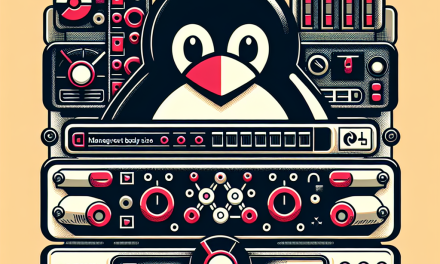When managing storage on Linux servers, RAID (Redundant Array of Independent Disks) configurations provide redundancy and performance advantages. However, rebuilding a RAID array after a drive failure requires careful management to ensure data integrity and system stability. This article outlines best practices for securely managing RAID rebuilds on Linux servers.
Understanding RAID and Rebuilds
RAID utilizes multiple disks to improve fault tolerance and performance. When a drive in a RAID array fails, the system undergoes a rebuild process to restore the array’s functionality. During this period, the RAID array is vulnerable, making it crucial to follow best practices.
Best Practices for RAID Rebuild Management
1. Regular Monitoring and Alerts
Implement monitoring tools to keep track of RAID health and performance. Use software like mdadm for software RAID or vendor-specific tools for hardware RAID solutions. Set up alerts for issues such as:
- Drive failures
- Rebuild statuses
- Performance metrics (e.g., latency)
2. Schedule Rebuilds During Off-Peak Hours
To minimize the impact on performance, schedule RAID rebuilds during low-usage hours. This reduces the load on the server and helps maintain system responsiveness for users.
3. Backup Data Regularly
Before initiating a RAID rebuild, ensure that you have current backups of all critical data. Data loss can occur during the rebuild process, especially if additional drives fail. Utilize tools like rsnapshot, Bacula, or cloud-based solutions for reliable backups.
4. Understand Your Hardware Limitations
Be aware of the limitations of your RAID controller or software. For instance, some RAID configurations may not support hot-swapping or have varying rebuild speeds depending on the RAID level. Consult manufacturer documentation for specifics.
5. Use the Right RAID Level
Choose an appropriate RAID level based on your needs. RAID 1 offers redundancy at the cost of storage capacity, while RAID 5 and RAID 6 provide a balance between redundancy and space efficiency. Assess your performance and data recovery needs before deciding.
6. Keep the System Updated
Regularly update your Linux kernel and RAID management tools. Ensuring that your system is up-to-date helps mitigate security vulnerabilities and increases system stability during the rebuild process.
7. Increase System Resources Temporarily
If possible, allocate additional system resources (CPU, RAM) during the rebuild process. This helps speed up the rebuild and reduces the risk of performance degradation. Make sure to monitor system resource usage during this period.
8. Perform Regular Health Checks
Conduct regular health checks on your drives and the RAID array. Use tools like smartctl for monitoring disk health and mdadm --detail for checking RAID status. Implement routine checks to preemptively identify potential issues.
9. Document the Process
Maintain detailed documentation of your RAID configurations, including drive models, RAID levels, and rebuild processes. Documentation helps streamline the recovery process in case of future failures and provides a reference for troubleshooting.
10. Educate Your Team
Ensure that staff managing the server are trained and familiar with RAID configurations and best practices. Provide resources and knowledge sharing to empower your team in handling RAID rebuilds effectively and confidently.
Conclusion
Managing RAID rebuilds on Linux servers requires careful planning and execution. By following these best practices, you can enhance data security, minimize downtime, and ensure the reliability of your storage systems. Regular monitoring, proper scheduling, thorough documentation, and staff education are key elements in effectively managing RAID arrays and safeguarding your critical data.
Consider reviewing and adjusting your RAID management strategies regularly to mitigate risks and enhance performance.
By understanding and implementing these best practices, you can ensure a smooth and secure RAID rebuild process, ultimately enhancing the resilience of your Linux servers.





